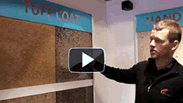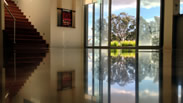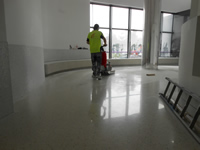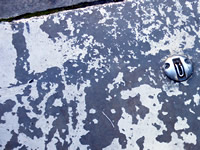Quick FAQs
-
We are opening a cafe. The building we have purchased has lino glued to the floor. We are thinking of removing the lino and going for a polished concrete sort of industrial look. What would you suggest and how long after you have finished can we start?
Depending on the condition of the slab underneath, the size of the restaurant and the desired finish, this can all happen pretty quickly.
More info -
Is polished concrete expensive?
The pricing of a polished concrete finish is comparable to the pricing for a tiled floor. -
What does exposure mean?
Exposure is the amount of aggregate (rock, quartz, pebble etc) that is able to be seen as a result of the grinding process.
More info -
Is it possible to stain and polish concrete? (dark grey)
Yes. It is possible but the process can be expensive as far as the cost of the stain is concerned and the area of the slab.
More info -
How should one evaluate the costs involved when choosing Polished Concrete?
Home owners should consider the long-term benefits of Polished Concrete.
More info -
My friend told me that concrete floors crack?
All concrete floors can crack, however expansion joints in the correct areas will minimise cracking and repair is simple. -
Will polished concrete effect my in slab heating.
No, polished concrete is the ultimate finish for in slab heating.
More info -
Can I have the timber and carpet floors level with the concrete?
Yes, most definitely. Levels are another important reason for you to communicate with your Builder and Concreter.
More info




 Do it once, do it right!
Do it once, do it right!
